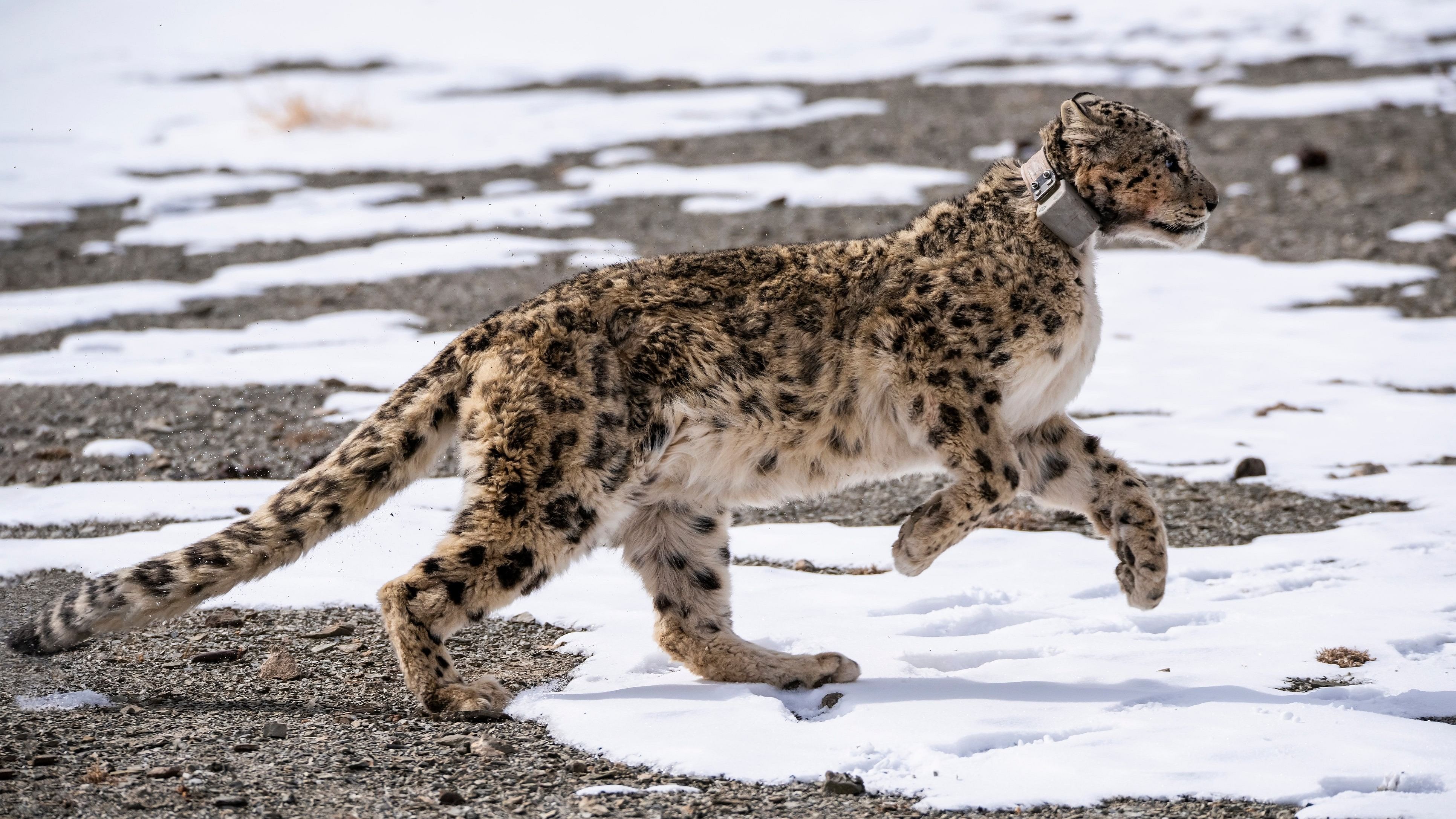
Research in the snow leopard range has attracted attention in the past five years, mostly due to India’s growing interest in protecting high-mountain watersheds.
Credit: iStock Photo
Catching a glimpse of a snow leopard, popularly known as the ghost of the mountain, is a rarity, even for regular visitors to the Himalayan heights. The top predators of the icy landscape are not only shy creatures but also extremely good at camouflaging, thanks to the colouring of their coats that makes them difficult to spot against the rocky and snowy background.
There was no census for them all these years, primarily because of their elusive nature and harsh terrain. Following the success of the tiger counting exercise based on a new scientific protocol, Indian wildlife biologists, for the first time, began the snow leopard census in 2019 using a similar protocol even though the number of camera traps was limited.
Last month, the snow leopard population assessment was out, putting the estimated number of the animals at 718 spread over 107,000 sq km in six states and union territories - Ladakh (477), Uttarakhand (124), Himachal Pradesh (51), Arunachal Pradesh (36), Sikkim (21), and Jammu and Kashmir (9).
The enumeration, wildlife experts say, is the first step towards conservation of the animal facing extinction threats from loss of habitat and a decline in its traditional prey base. “The snow leopard population estimate marks a significant first step in securing the future of these magnificent creatures. By systematically assessing 70% of their potential range, we have taken a major step towards safeguarding them,” says Virendra Tiwari, director of the Wildlife Institute of India, Dehradun.
If this is done regularly every four years—as the Union Environment Ministry promised—such a census will show how the species is faring, and conservation actions can be taken accordingly.
Research in the snow leopard range has attracted attention in the past five years, mostly due to India’s growing interest in protecting high-mountain watersheds. Though Project Snow Leopard has existed since 2009, only about one-third of the range received some sort of attention, covering just 5% of the pockets in Ladakh, Jammu and Kashmir, Uttarakhand and Himachal Pradesh before 2016. In recent years, eastern Himalayan habitats in Sikkim and Arunachal Pradesh have also been explored.
Conservationists and wildlife biologists have found that similar to many other mammals, snow leopards also faced multiple threats that arose with ongoing road widening and developmental works in the Himalayas.
Traditionally, snow leopard ranges are shared by the agro-pastoralists who use the area for grazing livestock. With both domestic and wild herbivores competing for food, known snow leopard habitats, such as Lahaul Valley, have been witnessing a decline in the wild ungulates and native livestock. In other words, there’s a prey shortage for the predators.
“Cashmere or pashmina production is becoming an important threat to snow leopards due to competition from the increasing population of cashmere goats,” a group of Indian biologists have reported recently, noting a similar decline in Spiti Valley and Ladakh.
Preys and predators
Two of the snow leopards’ most common prey are blue sheep and ibex. But the habitats they share are the same ones preferred by thousands of livestock—primarily goats and sheep—in the summer months. With the vegetation not enough to support all, there is a drop in the wild prey population. There are also additional factors like hunting by the locals for food.
“Across Pangi, Lahaul and northern and south-western Spiti, the ibex is the only large wild prey of the snow leopard. These are also the areas where migratory livestock grazing, depredation by free-ranging dogs, and illegal hunting and wildlife trade by local and migratory herder communities and immigrant labourers are pervasive and intense,” the study reported.
There is evidence of interference and competition between migratory livestock and ibex, with the livestock displacing ibex from the pastures through forage removal and direct disturbance. Blue sheep exist extensively and at relatively high densities in Spiti, especially along the eastern bank of the Spiti River and parts of the western bank, where the terrain is relatively gentle and ibex are largely absent. But these are also areas used for local livestock grazing.
In addition, new threats have emerged due to road widening and developmental projects in the Himalayas. Such activities bring a very large population of migrant workers within a short period into a landscape that usually supports very low human densities. This puts extreme pressure on the biomass. Increased garbage produced by tourists and military camps has also resulted in a rise in the number of free-ranging dogs that have emerged as a serious threat to wildlife in the higher reaches.
“Snow leopards are relatively shy animals with barely any knowledge of how to deal with dogs. They don’t know how to protect themselves from dogs that often chase them away or harass brown bears. Dogs are turning into a huge menace for wildlife in the high altitude,” Abhishek Ghosal, who is working with the Wildlife Trust of India and has been researching these cats for over a decade, told DH.
Though conservation efforts began over a decade ago, several challenges exist. For one, the staff strength and capacity of the state forest departments are inadequate, leading to inefficient monitoring and poor communication with the locals using the same space. Nearly 70% of the snow leopard range is still unprotected. Close to 85% of the snow leopard ranges are either unstudied or poorly studied. Additional financial and logistics support is needed to monitor these animals closely.
“With continuing concerted and innovative efforts by multiple partners, we are hopeful that India will achieve effective conservation of snow leopard in its entire range by 2030,” the scientists wrote in the report.
